Peak District mountain hares: Study claims 3,500 left in England
- Published
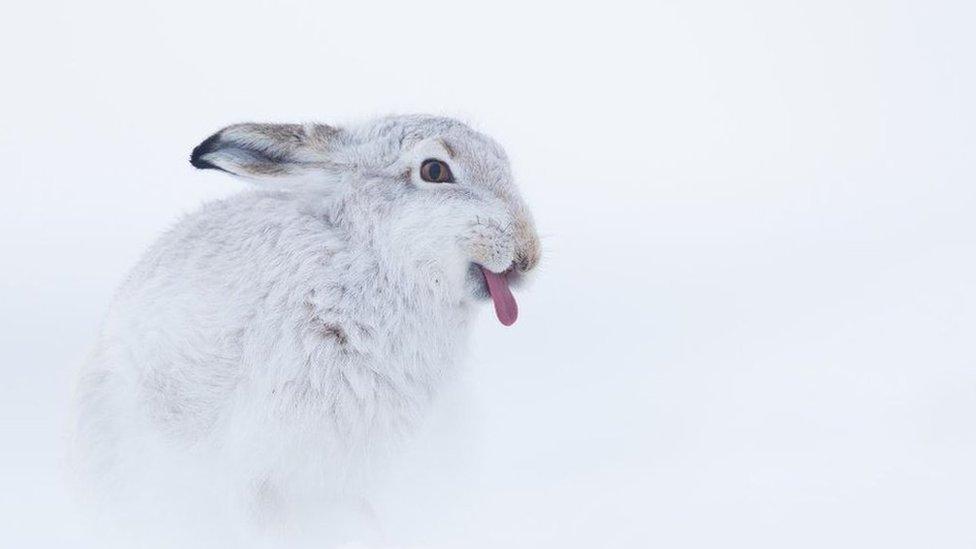
Mountain hare pelage is brown in summer and turns white in winter
Only 3,500 mountain hares are left in England, research suggests.
The research, published today, said the country's last surviving population of the hares - in the Peak District uplands - was at risk of extinction.
The independent study, conducted by Manchester Metropolitan University and Queen's University Belfast, is the first such assessment for 20 years.
Dr Carlos Bedson, lead author of the study, said the findings were "deeply concerning".
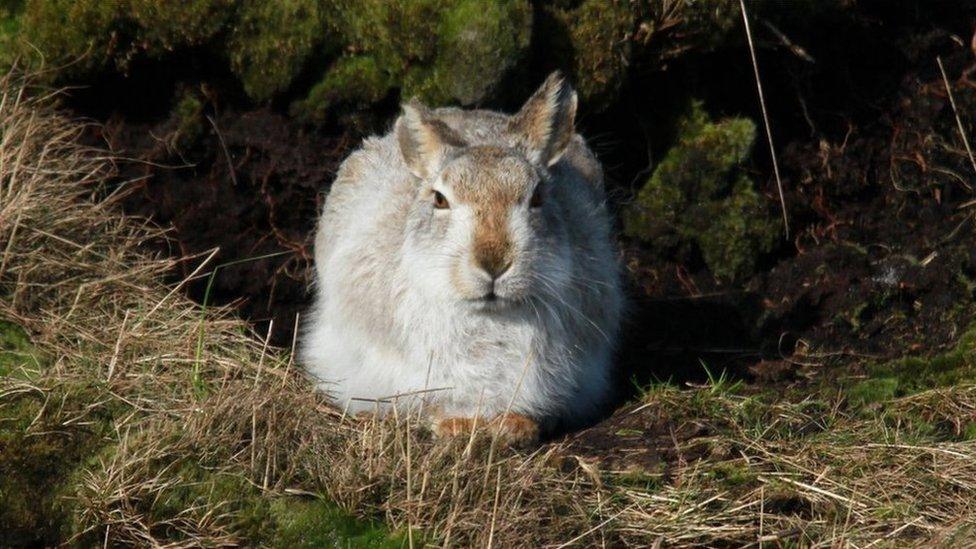
Experts fear global warming may be putting the hares at risk
The surveys saw researchers walk more than 515 miles (830km), observing nearly 2,000 mountain hares.
They estimated the population density was just 10 mountain hares per sq km in the Dark Peak - the area where the populations are largely based.
Dr Bedson said: "Our findings are deeply concerning.
"Whilst there are a couple of places where mountain hares are abundant, most of the Peak District hills have very few hares remaining."
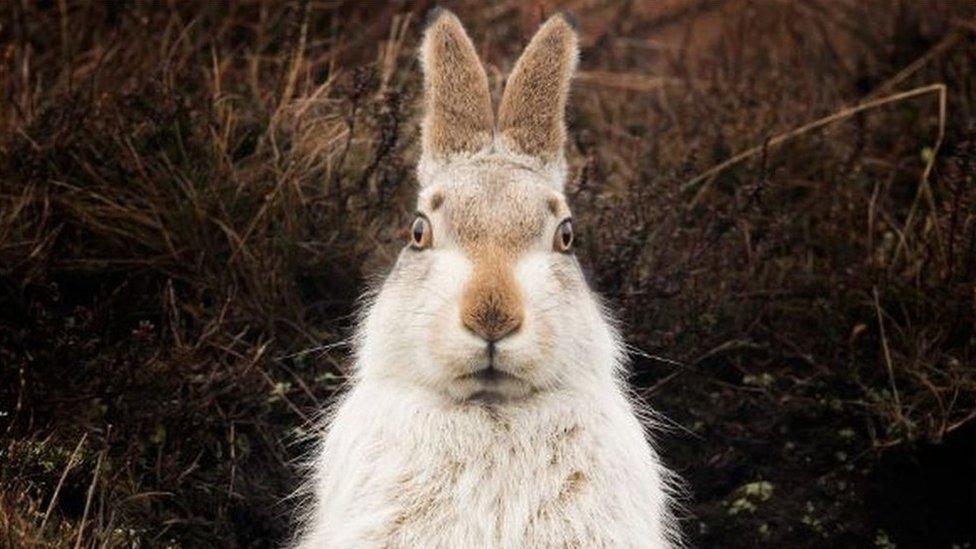
Efforts to reintroduce the species in England in the 1800s proved successful in the Peak District
However, he said peatland restoration - currently ongoing - does offer some hope for populations.
"The highest mountain hare densities were in ecologically restored blanket bog, which has benefitted from investment in rewetting, where the natural flow of water is restored by blocking gullies and planting mosses and heather," he said.
"It's a low population and there has always been uncertainty. The last surveys were conducted in 2002. Since then there has been speculation about whether the population has been up or down.
"Long-term monitoring of mountain hares is really important."
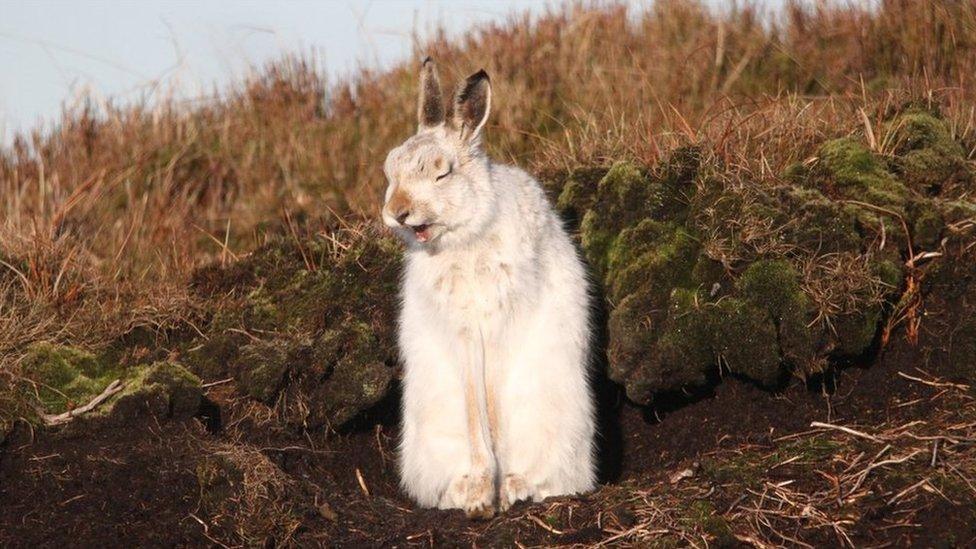
The creatures are mainly based in the Dark Peak area, the researchers said
He put the decline down to food resource, changing weather conditions and sometimes diseases and parasites.
"We sometimes hear reports of shooting events or hare coursing and so we may want to think about that as a society," he said.
The research, which started in 2017, was funded by the People's Trust for Endangered Species (PTES).

Populations of mountain hares can fluctuate, Dr Bedson said, which is why long-term monitoring is important
Mountain hares - a sister species to the Arctic hare - died out in England during the last ice age.
Reintroduction attempts were made in the late 1800s and while most were unsuccessful, those released into the Peak District survived.

Dr Bedson said the peatland restoration could help the hares survive
The trust said it believed climate change was an increasing risk to the creatures' survival, making summers too warm and reducing food sources, such as heather.
Reduced snow coverings mean the hares may not be as camouflaged in winter, despite their white coats.
Dr Bedson said: "Mountain hares love the cold and climate change is a major threat to them."

Experts fear global warming may be putting the hares at risk
Earlier in the year, a preliminary study carried out by the Game and Wildlife Conservation Trust (GWCT) suggested the population of the hares may be higher than previously thought.
However, PTES said both the scientific data and anecdotal evidence showed numbers had been dropping annually.
Nida Al-Fulaij, conservation research manager at PTES, said: "Mountain hares, like most British mammals, face numerous threats which can be compounded by one another or balance each other out.
"Unpicking what's happening at a local level can be really challenging. It's clear that our snowy white mountain hares are mismatched against the dark moors when we have no snowfall.
"And if warmer weather increases then it is unclear how mountain hares - adapted to colder climates - will cling on."

Hare loss?
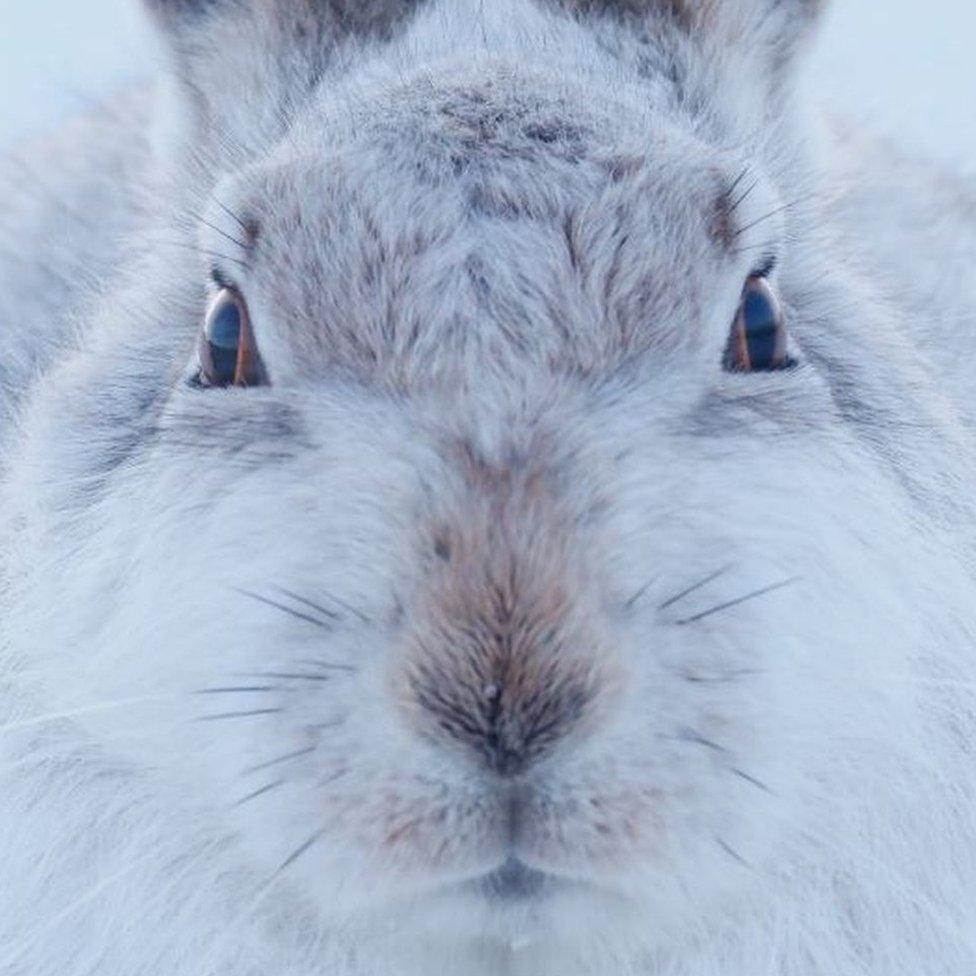
Mountain hares died out in England during the last ice age, though they survived in Scotland. However, in the 1870s, some landowners reintroduced them in England and they began to thrive in the Peak District.
Mountain hare pelage is brown in summer and turns white in winter. Once it was thought the hares ate snow to turn white. In fact, the change relates to differences in day length and air temperature, which stops them producing brown melanin in their fur.
There are populations of mountain hares in Scotland and Northern Ireland.
Source: Dr Carlos Bedson

Follow BBC East Midlands on Facebook, external, Twitter, external, or Instagram, external. Send your story ideas to eastmidsnews@bbc.co.uk.
Related topics
- Published10 February 2022
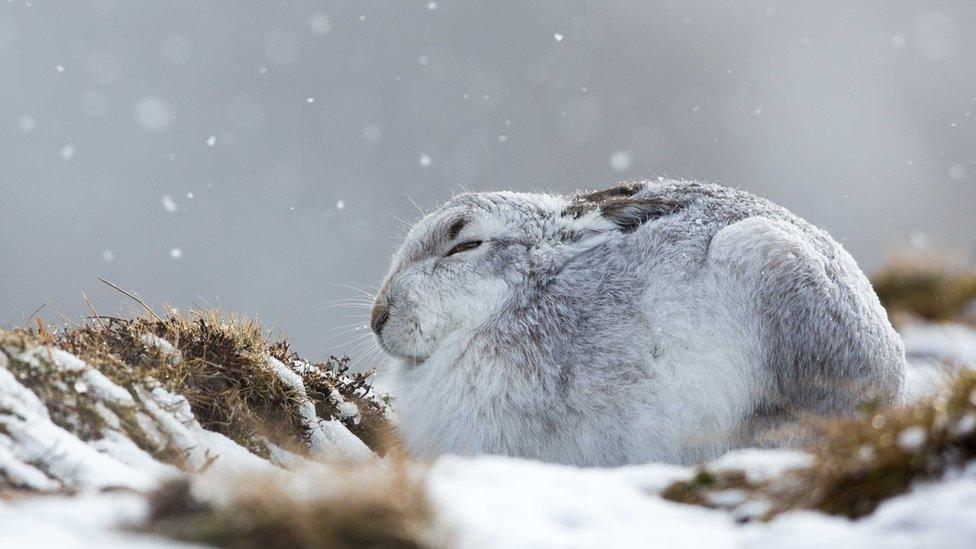
- Published31 January 2021
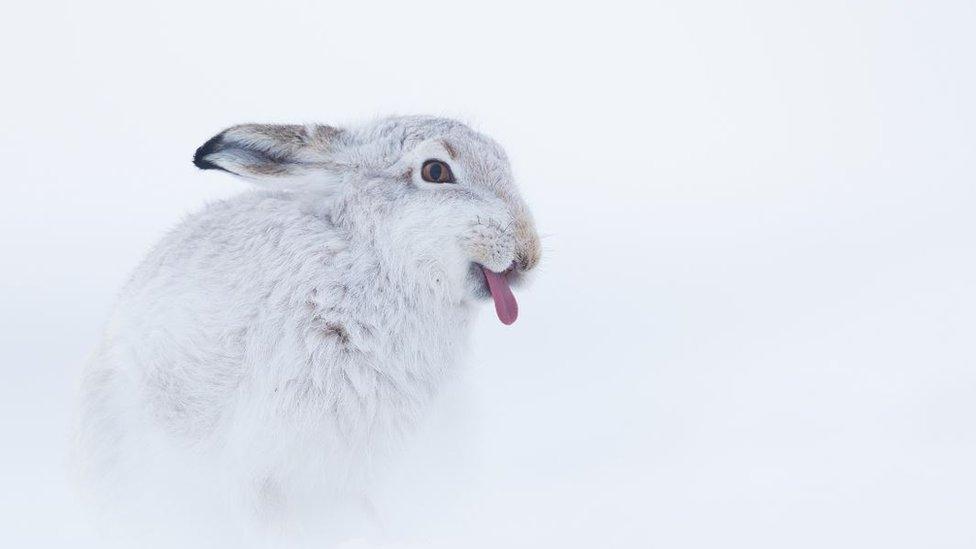
- Published27 January 2021
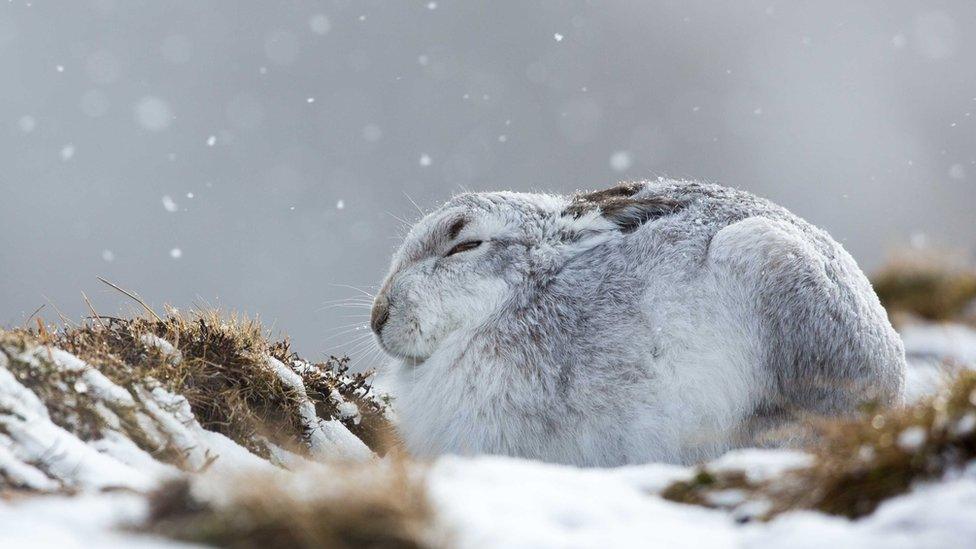
- Published11 November 2019
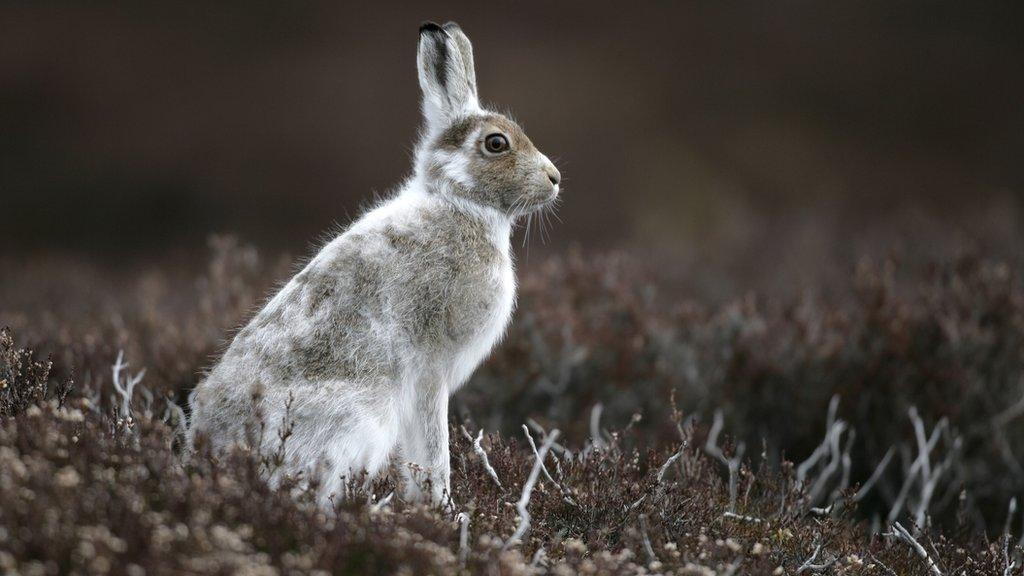
- Published14 August 2018
